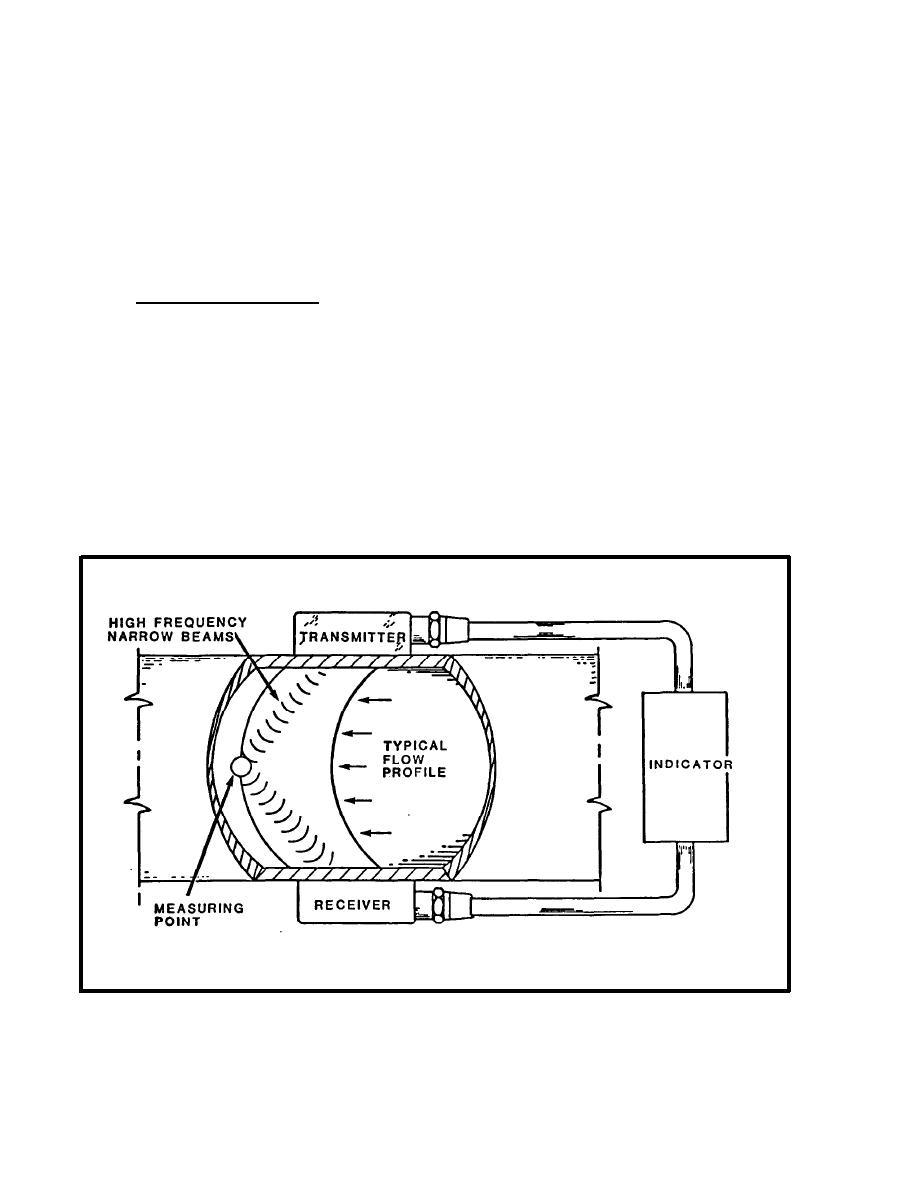

Custom Search
|
|

|
||
 discontinuities in the liquid cause a signal pulse to be reflected to the
receiver. Because the liquid (and entrained impurities that cause the
reflection) is moving, the position of the particle that reflects the pulse
changes at the flow rate. The change in location of the particle results in a
shift in frequency of the reflected pulse. The frequency shift is
proportional to the velocity of the liquid. Typically, the liquids being
measured must contain at least 25 parts per million of 30 micron or larger
suspended particles or bubbles.
2.2 Time-of-Travel Meter. Time-of-travel meters have transducers mounted on
opposite sides of the pipe (Figure 6-12). The configuration provides for
emitted ultrasonic pulse-traveling between the two transducers mounted at a
45 angle to the direction of flow. The speed of the pulses in the liquid is
timed. The difference in time between pulse transmission and reception
traveling upstream and the pulse traveling downstream is proportional to flow
rate. Time-of-travel meters measure flow of liquids that are relatively free
of entrained gas or solids. These meters cover the range of liquids with
entrained gases or solids from approximately 5 parts per million to a density
capability of doppler type meters. Time-of-travel meters are sensitive to
pipe wall thickness. Therefore, Inaccuracies arise if scale has formed on the
interior of the pipe.
FIGURE 6-12.
Time-of-Travel Ultrasonic Flowmeter
6-21
|
 
|
|
 |
||